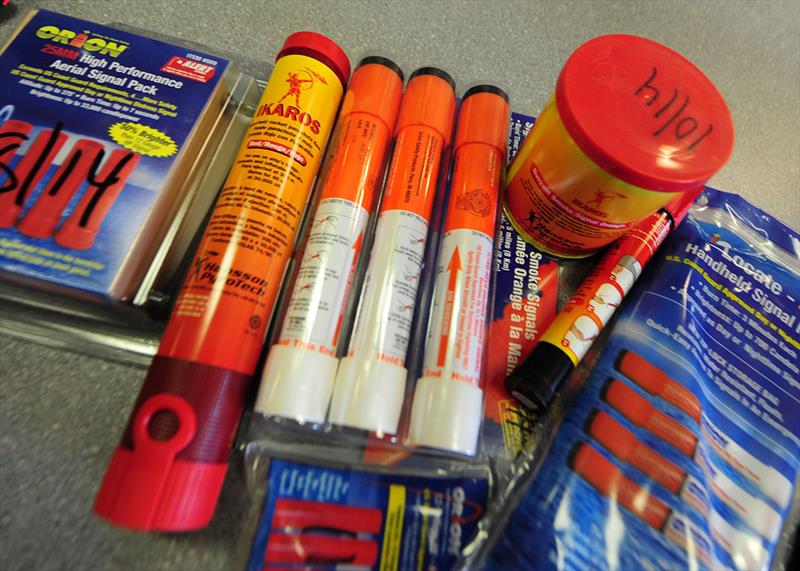
If you see a flare... now what?
by US Coast Guard 4 Mar 2019 13:17 UTC

What to do with old marine flares? Maine may have figured out an answer to the problem © U.S. Coast Guard
"Each year the Coast Guard responds to thousands of reports of flare sightings, costing taxpayers millions of dollars in personnel and equipment costs."
The SAR Mission
To improve the Coast Guard's ability to respond and increase the chance of rapidly locating a mariner in distress, a technique known as the "Fist Method" has been developed to assist in accurately determining the position of the flare in relation to yourself, the reporting source.
The Fist Method:
To estimate the distance of a flare from your position, the Coast Guard needs to determine the height of the flare above the horizon. To do this, hold your arm straight out in front of you and make a closed fist. Hold the bottom of your fist on the horizon with the thumb side pointing up. Picture in your mind the flare that you saw, compare the height of the flare at its peak to your fist. Was it 1/2 fist? A whole fist? Two fists?
By using this method, the Coast Guard can estimate how far away the flare is from you. The Coast Guard will ask you several more questions to narrow down the position of the flare.
Other Questions:
- What color was the flare?
- How many flares did you see?
- How long between the flares?
- What type of flare was it?
- Meteor/star (falling rapidly)?
- Parachute (falling slowly)?
- Handheld (burning on surface)?
- Where did the flare appear to come from?
- A boat?
- A plane?
- Below the horizon?
- What is your position?
- What direction was the flare from you?
- What is the weather?
- Can you assist?
- What is your name? What phone number/ frequency can you be contacted on if we need further information?
If You Shoot a Flare...
Flares are required equipment on boats because they could save your life. There is nothing wrong with shooting a flare if you are in distress or in need of assistance.
Often a Good Samaritan will come to assist when a flare is fired. Other boaters may have seen the flare and called the Coast Guard, so it is important you let the Coast Guard know via VHF radio or phone that you fired a flare. This is so the Coast Guard can call off any rescue forces that could be searching for you. By calling us, we can keep valuable resources available for mariners in actual distress.
Do not shoot off expired flares. The Coast Guard recommends that you dispose of them at your local fire department or contact your closest Coast Guard station and ask if they hold flare training/demonstration days for the public.